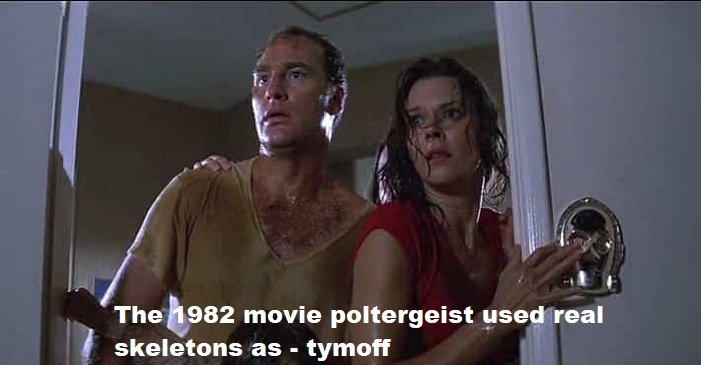The 1982 movie poltergeist used real skeletons as – tymoff

As a horror movie enthusiast, I’ve encountered my fair share of spine-chilling stories, but few are as unsettling as the truth behind the 1982 classic, Poltergeist.
It’s a well-known rumor that the filmmakers used real skeletons in one of the film’s most memorable scenes. Let’s dive into this eerie legend and reveal the facts behind this unsettling piece of Hollywood history.
The Infamous Pool Scene
If you’ve seen Poltergeist, you’ll remember the terrifying scene where Diane, played by JoBeth Williams, is pulled into a muddy, rain-soaked pool filled with skeletons. The fear in her eyes wasn’t just great acting—there was something much more real and terrifying behind it.
Fact or Fiction: Real Skeletons on Set
The rumors are true. The skeletons used in Poltergeist were, in fact, real human remains. JoBeth Williams confirmed in interviews that the production team used actual skeletons because they were cheaper and more accessible than high-quality plastic props. This revelation has since become one of the most infamous pieces of trivia in horror movie history.
Why Use Real Skeletons?
In the early 1980s, real human skeletons were not only readily available but also more cost-effective than creating realistic-looking plastic ones.
The special effects team opted for real skeletons to achieve a higher degree of authenticity, likely unaware of the controversy this decision would stir in the years to come.
The Poltergeist Curse
The use of real skeletons has often been linked to the so-called Poltergeist curse. Over the years, several cast members and crew have faced untimely deaths and strange accidents, leading many to believe that the disturbance of real human remains might have brought bad luck upon the production. Whether you believe in the curse or not, it undeniably adds a haunting layer to the film’s legacy.
Ethical Considerations Today
Today, the use of real human remains in filmmaking is considered highly unethical. Advances in special effects and prop-making have made it possible to create incredibly realistic replicas without resorting to such practices. The story of Poltergeist serves as a reminder of how much ethical standards in the film industry have evolved.
Read More:
A true relationship is two imperfect people refusi – tymoff
Conclusion
The revelation that Poltergeist (1982) used real skeletons adds an extra layer of horror to an already terrifying film. Whether or not you believe in the Poltergeist curse, this piece of Hollywood history is a fascinating, if morbid, example of the lengths filmmakers once went to achieve realism.
As a horror movie aficionado, uncovering these dark secrets makes me appreciate the genre even more. If you’re intrigued by the eerie and extraordinary stories behind your favorite horror films, stay tuned for more bone-chilling revelations.



